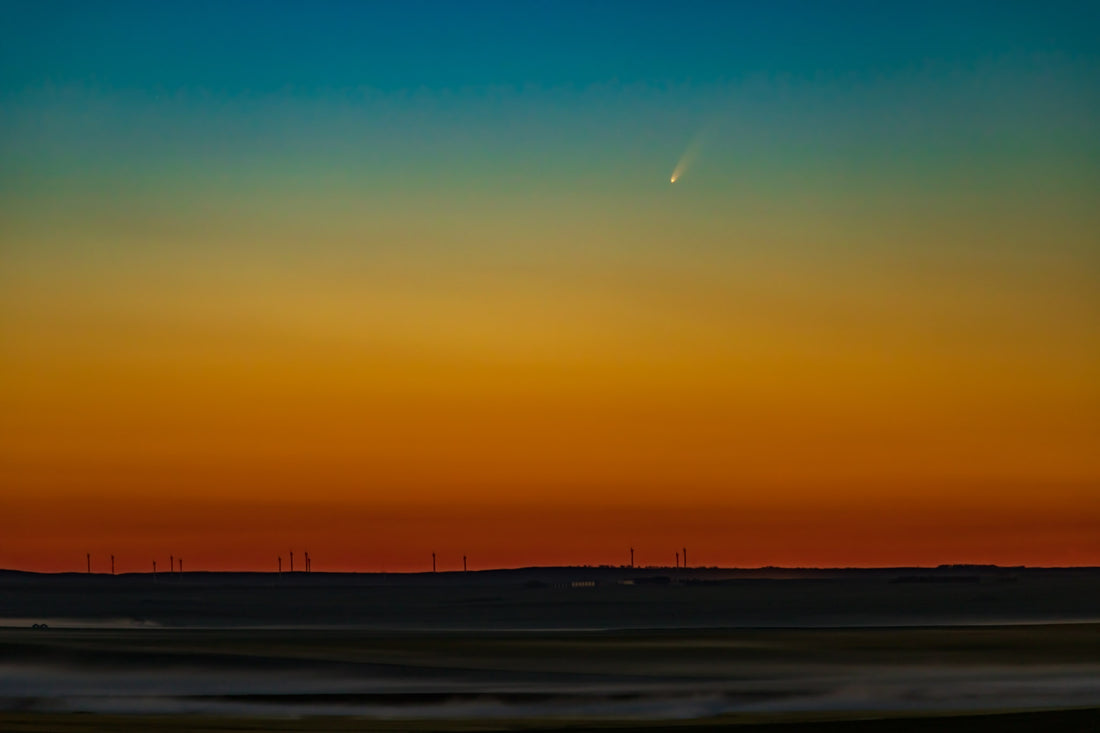
Chasing a Comet at Dawn and by Day
Share
SkySafari Premium Free Preview - By Alan Dyer - Visit "Tonight" --> "Featured Stories" for more content!
Discovered in January 2023 at the Purple Mountain Observatory in China (translated as Tsuchinshan), then confirmed by the ATLAS robotic search telescope in February, Comet C/2023 A3 is promising to provide us a good show this September at dawn and in October at dusk.
Here are the prospects for the dawn show— plus a rare daytime appearance. After being behind the Sun for much of August and early September, Comet Tsuchinshan-ATLAS began to climb into the dawn sky in mid-September, but visible at first only from southern hemisphere latitudes.
By the last week of September it will have traveled far enough north, with it sitting in the constellation of Sextans, to enter the dawn sky as seen from mid-northern latitudes. The view might resemble my opening image, of Comet NEOWISE at the start of its dawn appearance in 2020, on July 5.
The chart below shows SkySafari’s depiction of the scene at dawn on September 26 from 45° N. The comet is low! Will it be bright enough to pick out of the morning twilight?
Perhaps just with binoculars and cameras. And don’t expect the tail to look as obvious as this. You will need a site with a low horizon and clear view to the east.

The next few mornings provide some photogenic opportunities as the waning crescent Moon descends to pass the comet at dawn. The view below is of September 30, with the Moon 15° north of the comet.

However, no sooner does the comet enter our dawn sky, it quickly drops out of sight again close to the Sun. The comet’s orbit takes it between Earth and the Sun just as it also reaches perihelion, its closest point to the Sun, on September 27. With it passing between us and the Sun, the comet might undergo a rapid rise in brightness due to “forward scattering” of sunlight lighting up its dusty coma and tail.

The view above shows the day sky for October 6, with the comet 12° (two binocular fields) to the west of the Sun. Again, the tail is a wishful exaggeration!

If the comet has not broken apart and fizzled — as comets are wont to do! — then it might then begin to provide us with a great show low in the western sky at dusk. I’ll leave that prospect to a later posting, once we know better how the comet is actually performing.


2 comments
Been looking for this comet for a few weeks without success. Then I see that the TV weatherman found it yesterday on the western horizon. Will look again this evening- comets are so damn cool…
Super azrticle j espere que cette comète ssera belle est bien visible a l yeux nu sa serait ma premier aussi brillant car sa fait que 3 ans que j ai commencer commencer l astronomie